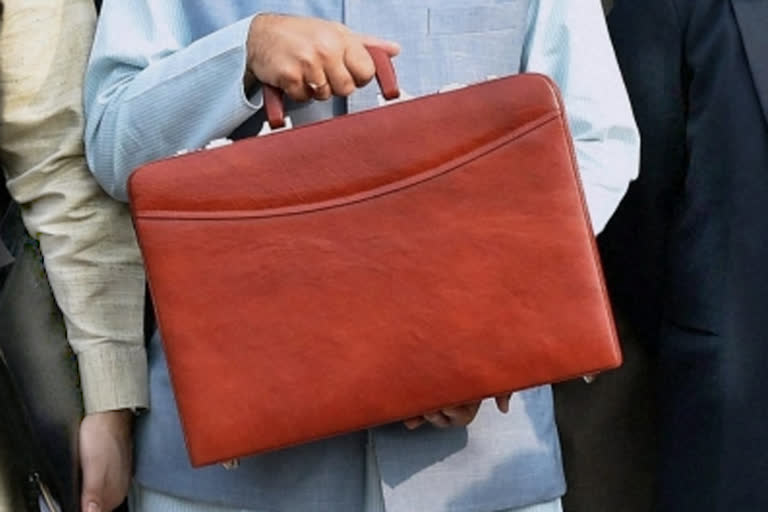Hyderabad: In less than 48 hours to go Finance Minister Nirmala Sitharaman will carry the Budget Briefcase with her to present the General Budget 2019 on July 5.
The Budget Briefcase includes all important documents needed by the Finance Minister at the time of the presentation. So, let us have a look at the documents present in the Budget Briefcase.
1. Annual Financial Statement: It is the main Budget document and commonly referred to as the Budget Statement. It is a statement of estimated receipts and expenditure of the Government of India.
2. Demands for Grants: The estimates of expenditure from the Consolidated Fund included in the Budget Statements and required to be voted by the Lok Sabha are submitted in the form of Demands for Grants. The Demand for grants includes provisions with respect to revenue expenditure, capital expenditure, grants to State and Union Territory governments together with loans and advances.
3. Finance Bill: It is present in fulfilment of the requirement of Article 110(1)(a) of the Constitution, detailing the imposition, abolition, remission, alteration or regulation of taxes proposed in the Budget. A Finance Bill is a Money Bill as defined in Article 110 of the Constitution.
4. Statements mandated under FRBM ACT:
a. Macro-Economic Framework Statement: It includes an assessment of the overall growth prospects of the economy and health of important sectors with the underlying assumptions.
b. Medium-Term Fiscal Policy cum Fiscal Policy Strategy Statement: It includes the underlying assumptions, an assessment of the balance between revenue receipts and revenue expenditure and the use of capital receipts including market borrowings for the creation of productive assets. It contains details of Revenue Deficit, Effective Revenue Deficit, Fiscal Deficit, Tax to GDP ratio and Total outstanding Debt as a percentage of GDP at the end of the year.
5. Expenditure Budget: In this, the estimates made for a scheme/programme are brought together and shown on a net basis on Revenue and Capital basis at one place.
6. Receipt Budget: The document provides details of tax and non-tax revenue receipts and capital receipts and explains the estimates.
7. Expenditure Profile: It gives an aggregation of various types of expenditure and certain other items across demands.
8. Budget at a glance: It shows in brief, receipts and disbursements along with broad details of tax revenues and other receipts.
Read more:Budget 2019: Know the curious case of Finance Minister's briefcase



